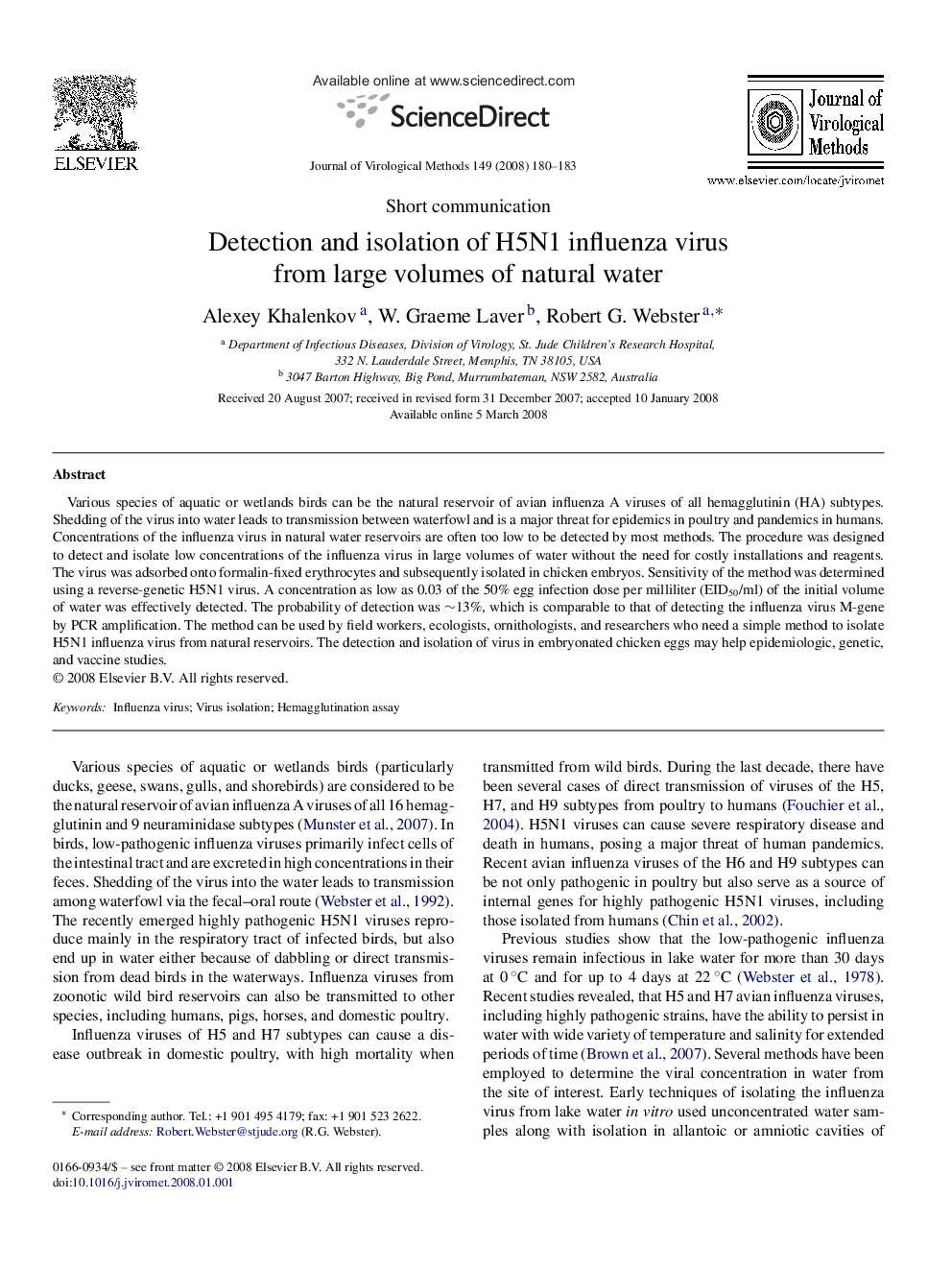| Article ID | Journal | Published Year | Pages | File Type |
|---|---|---|---|---|
| 3408158 | Journal of Virological Methods | 2008 | 4 Pages |
Various species of aquatic or wetlands birds can be the natural reservoir of avian influenza A viruses of all hemagglutinin (HA) subtypes. Shedding of the virus into water leads to transmission between waterfowl and is a major threat for epidemics in poultry and pandemics in humans. Concentrations of the influenza virus in natural water reservoirs are often too low to be detected by most methods. The procedure was designed to detect and isolate low concentrations of the influenza virus in large volumes of water without the need for costly installations and reagents. The virus was adsorbed onto formalin-fixed erythrocytes and subsequently isolated in chicken embryos. Sensitivity of the method was determined using a reverse-genetic H5N1 virus. A concentration as low as 0.03 of the 50% egg infection dose per milliliter (EID50/ml) of the initial volume of water was effectively detected. The probability of detection was ∼13%, which is comparable to that of detecting the influenza virus M-gene by PCR amplification. The method can be used by field workers, ecologists, ornithologists, and researchers who need a simple method to isolate H5N1 influenza virus from natural reservoirs. The detection and isolation of virus in embryonated chicken eggs may help epidemiologic, genetic, and vaccine studies.
